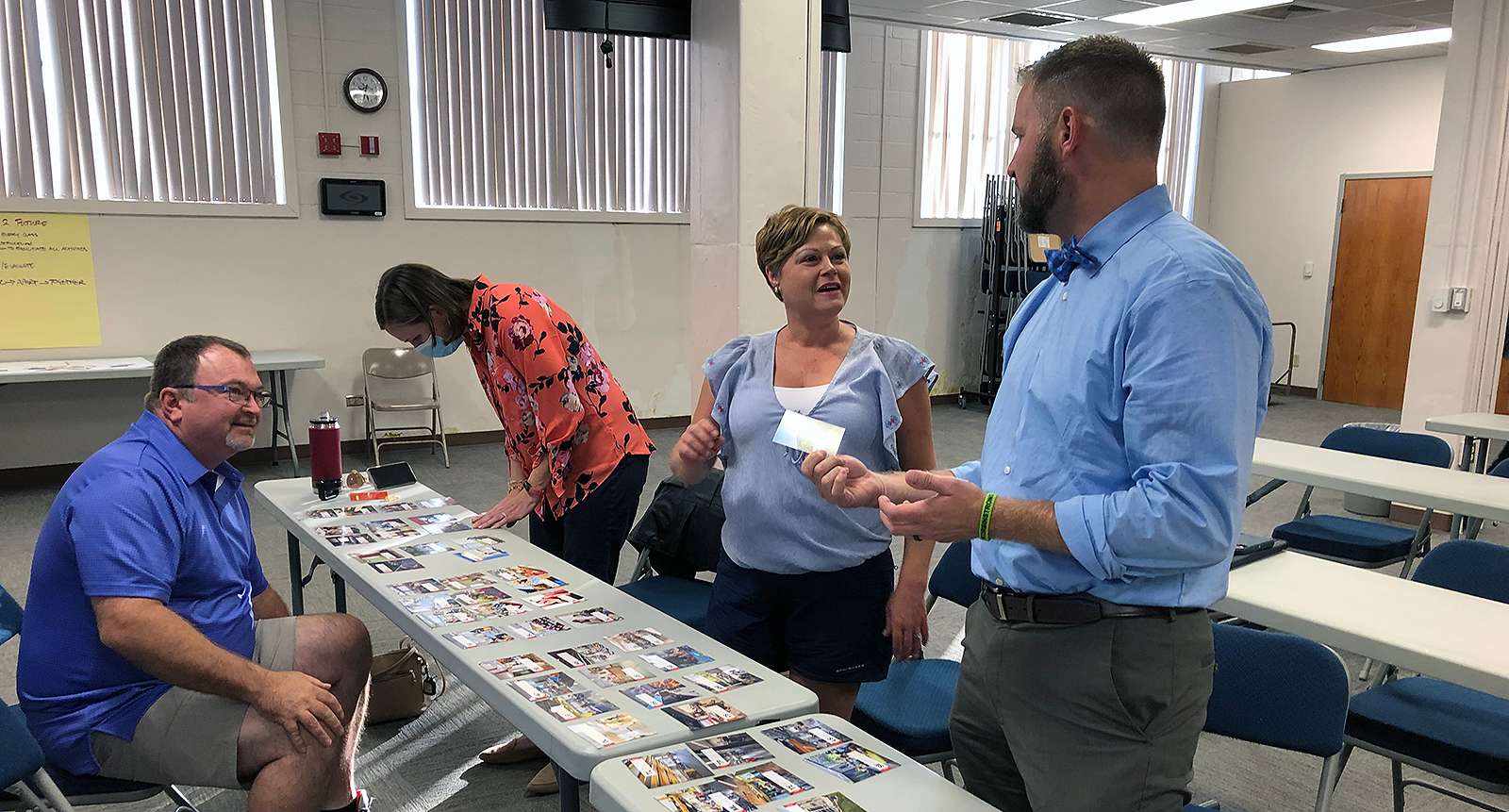Hays bond committee gets glimpse of how new, renovated schools could look
Posted Sep 16, 2021 6:01 AM

By CRISTINA JANNEY
Hays Post
Discussions about a future bond issue for Hays USD 489 on Monday and Tuesday focused on space.
Members of the community bond committee Tuesday viewed examples of other schools that its architect, DLR Group, has built or renovated recently.
They also discussed priorities for Hays schools.
Among some of the priorities listed by the group included adaptable spaces, flexible furniture, maker spaces, group spaces (an auditorium), media labs and learning suites.
Some community members also emphasized the need to create space that can be used by the community during non-school hours.
Much of the discussion Tuesday night revolved around what new or renovated buildings in Hays could look like.
Ian Kilpatrick, DLR K-12 design leader, shared photos from DLR projects in Kansas and across the country.
Recent bond improvements at peer schools



Diverse spaces for diverse kids
Kilpatrick said catering to individual variability accounts for 50 percent of student success. The physical environment accounts for 16 percent with 37 percent being attributed to teacher effectiveness.
Diverse spaces are needed for diverse learners, he said.
"I use the analogy that no one wants a house with 11 bedrooms and nothing else," he said. "You want a house with diverse spaces, because no one wants to cook breakfast in a bedroom. Schools are no different.
"We want to make sure they have all the environments whether it's career and tech, whether it's collaborative learning, whether it's that social collision space for our learners and our educators to be supported in their day to day," Kilpatrick said.

Kilpatrick said school rooms need to be designed with adequate space and furniture to facilitate their functions.
"Hands-on learning is critical to [students'] learning and their launch into the real world," he said.
This is why some schools are establishing labs where students can create projects, as well as work with technology and robotics.
Other design considerations include sightlines, acoustics, doors and furniture.
Furniture is something every single student touches every day and can be an inexpensive way to adapt spaces, Kilpatrick said.

Kilpatrick said everyone is a different size and improperly sized seating can affect student learning.

Kilpatrick said if students have a sense of ownership at their school they are more likely to engage in their learning.
"Sense of ownership — we've talked about this at the high school," he said. "How do students have ownership of their space? How can they have pride in their space? How can the community have pride?
"That goes a lot to the diverse environments that we spoke to earlier," he said. "You want to make sure there's a space where every learner feels comfortable and feels engaged and owns that space in a really prideful way."




Kilpatrick said DLR conducts research on student engagement before and after bond projects and has found engagement increased for both students and teachers after new schools were built or schools were renovated.
Hays falls behind peers
DLR discussed other schools in the state who have passed bonds in the last 10 years. In the Western Athletic Conference, which Hays is a member, three of the five schools — Dodge City, Garden City and Liberal — have passed bonds in the last 10 years. Great Bend is currently working on a bond. It last passed a bond about 12 years ago.

Below is a list of 5A schools. All of those in red have also passed bonds in the last 10 years.


